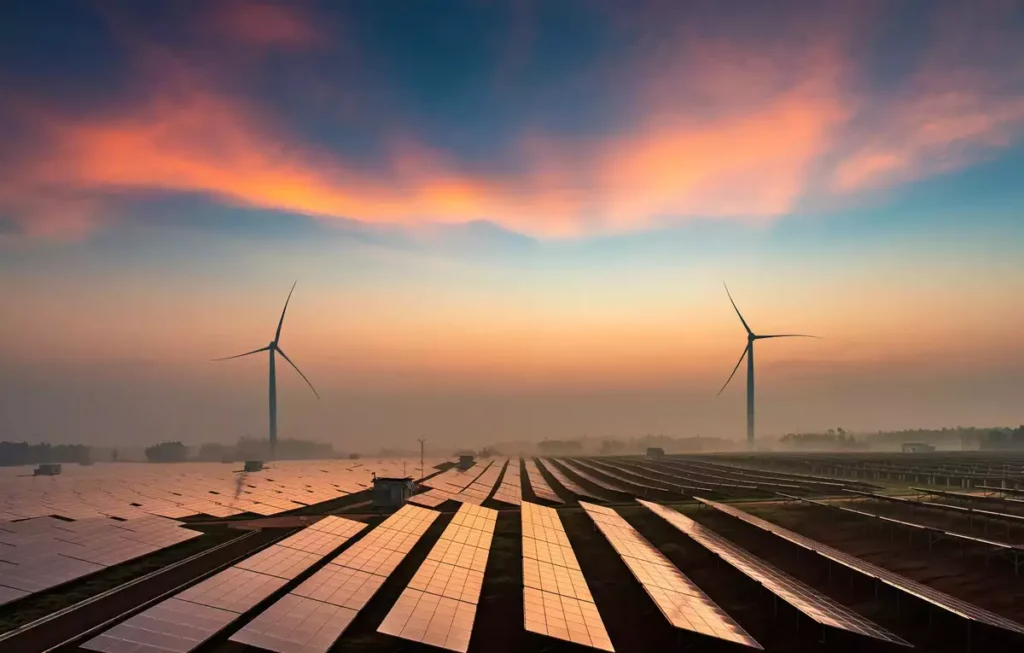India is on track to witness an astonishing five-fold surge in green ventures, expected to touch ₹31 lakh crore between 2025 and 2030. This transformative heading, point by point in a Crisil report revealed at the ‘India Infrastructure Conclave 2025’ in New Delhi, underscores the nation’s commitment to replacing money-related improvement with the normal obligation.
The Big Picture
Breaking Down the ₹31 Lakh Crore
Of the anticipated green investments, the lion’s share₹19 lakh crore—is saved for renewable energy and capacity courses of action. This incorporates the advancement of solar and wind control projects, as well as progressions in energy capacity propels.The transport and car segments are set to urge ₹4.1 lakh crore, centring on electric vehicles (EVs) and achievable mobility frameworks. In the mean time, ₹3.3 lakh crore will stream into the oil and gas areas, emphasizing cleaner fuel choices and decarbonization efforts.
These investments are pivotal in India’s journey toward achieving its net-zero target by 2070, which requires an estimated $10 trillion over the coming decades. This aligns with India’s Updated First Nationally Determined Contribution (NDC) under the Paris Agreement, which aims for a 45% reduction in GDP carbon intensity by 2030 (compared to 2005 levels) and a 50% share of installed power capacity from non-fossil fuel sources.
A Record-Breaking Year for Renewable Energy
India’s renewable energy sector has already been making waves. The nation’s installed capacity reached a remarkable 209.44 GW in December 2024, a 15.84% increase from the 180.80 GW recorded in December 2023. With 28.64 GW of capacity added in 2024 alone—a dramatic 119.46% jump from the 13.05 GW added in 2023—India is cementing its position as a global leader in clean energy deployment.
“As the fastest-growing large economy over the medium term, India has a window of opportunity to balance its developmental and environmental aspirations and priorities,” said Amish Mehta, Managing Director and CEO of Crisil.
The Road Ahead: Opportunities and Challenges
The report emphasizes that well-established green technologies—like solar and wind power and two-wheeler EVs—already enjoy robust support from debt financing avenues such as banks, sector-specific financial institutions, and bond markets. However, the path for emerging technologies like green hydrogen, carbon capture, utilization, and advanced energy storage solutions is more complex.
For these high-risk innovations, government incentives, grants, and policy frameworks will be the linchpin for success. Such measures will upgrade project practicality and pull in private players to contribute to cutting-edge feasible advances.
A Vision for a Greener India
This uncommon investment direction is more than fair numbers—it speaks to India’s vision for a greener future. With each megawatt included and each EV rolled out, the nation is creeping closer to a feasible energy environment.
Past financial picks up, these ventures symbolize India’s commitment to worldwide climate objectives and its eagerness to lead by illustration. As solar boards sparkle underneath the Indian sun and wind turbines move to coastal breezes, the ₹31 lakh crore venture suggests not reasonable change but an enduring commitment to securing a conventional planet for future eras.
India’s green journey isn’t close to development; it may be a confirmation of its resolve to harmonize progress with conservation.

